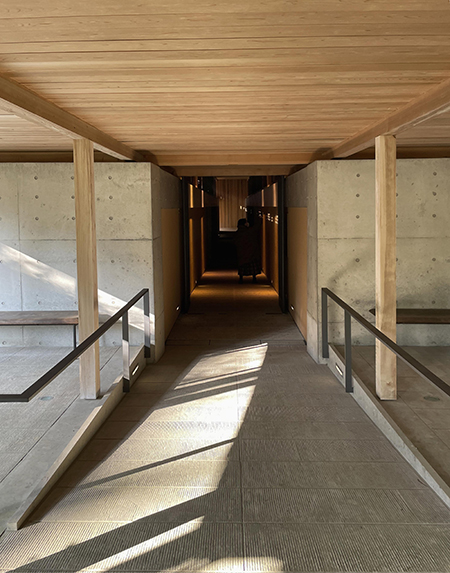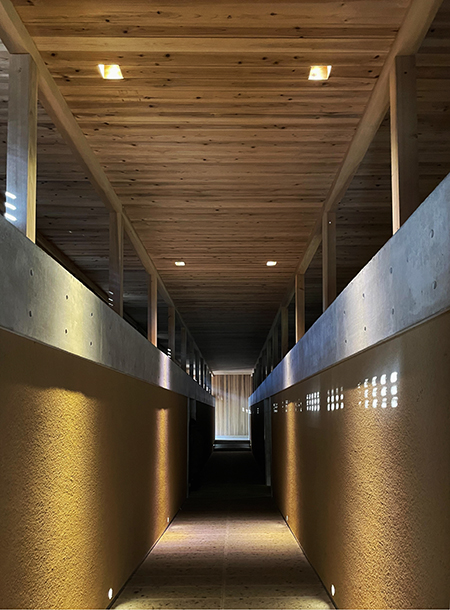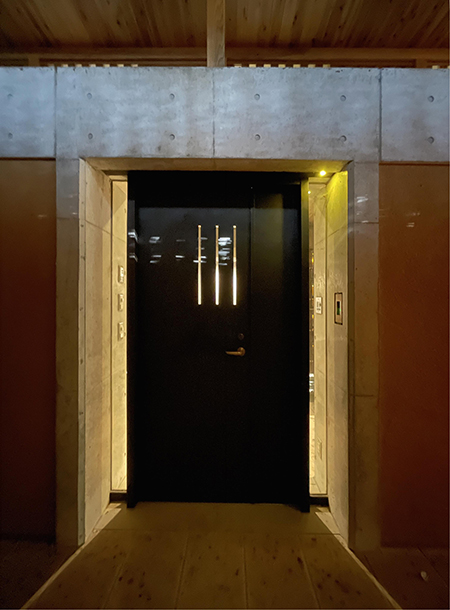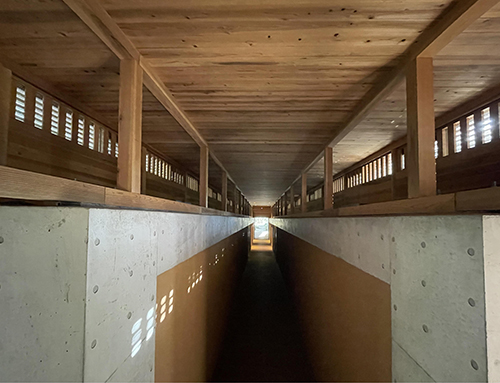


この竹林寺納骨堂の日本建築学会賞の受賞に際して審査員による現地審査が行われた。そのとき、審査員が目撃した体験として、たまたま納骨堂で読書にふける来訪者がいたとのこと。
審査員の方はそのことに驚かれ「この納骨堂に陰湿さはかけらもない」と高く評価したとされる。しかしあえて言えば、わたし的には「陰惨さ」という言葉に表現された評価の感覚はさてどうなのだろうと疑問に思った。もちろんその評価者の方は一般社会の普通の感覚に伝達する比喩として語られたのだろうと思うけれど。
そのあたりについて、設計者の堀部安嗣氏のことばが伝わっている。「いま、日常の風景から死を感じる機会が失われている。死者を恐ろしいものとして避けるのではなく、人の生と死をつなぐ道のような建築のあり方を考えた」と。
そしてこの空間で静かに自分の内面と向き合いながら、読書にふけられる方にわたしは自然な感受性と親近感を強く感じさせられる。人間存在は諸行無常であり、生死もまた流転の中のワンシーンという感覚でしょうか。むしろそういう生死があわく融合したような空間性に、祈りと似た読書という行為はきわめて似つかわしい。読書に際して人間は自分の本然のこころ存在として、対手としての人間の書いた文章と「語り合う」。それはきわめて個人的な体験の領域であり、他者からのいっさいの介入を遠ざかった地平にいるのだと思う。いわば内心の自由という確固とした場所にいるのだ。
自分のごく身近な人間、親兄弟が死んだとき、それを供養し納骨する。そこで悠久との対話を体験するのが多くの人間にとって当然のことだと思う。自分の親族が永遠に眠っている場が、陰惨な場であるわけがない。深くこころと向き合うことで、死者とのつながりを感受する場なのだと思う。


きのう「環境」という言葉について考えたけれど、要するにこういう魂とか、人間性・社会という側面での環境というものが強く感じられるのだ。これには竹林寺という仏教寺院建築であるということも大きいけれど、高断熱高気密という気候環境への対応技術という側面では基本的な目標はほぼ獲得されてきた北海道住宅にとって、さらに「奥行きを深める」部分として、こうした環境論というのは有意義。
このポイントについても北海道には豊かな自然との対話という好条件があるのではないだろうか。そういった「住宅の進化」も大いに期待していきたいと思う。
English version⬇
[A space with depth where some people read books “Chikurinji Ossuary”-3
I don’t think death is “gruesome. A place like the boundary between life and death is a place where the mind can be self-reflective. An environment that produces a richness of mind. …
When the Chikurinji Ossuary received the Architectural Institute of Japan Award, the jury conducted an on-site review. At that time, the jury witnessed an experience in which a visitor happened to be reading in the ossuary.
The jury was surprised by this and highly praised it, saying, “There is not a trace of insidiousness in this ossuary. However, I dare say that I wondered about the sense of evaluation expressed in the word “gruesome. Of course, I think the evaluator may have used the word as a metaphor to convey the ordinary senses of the general public.
The words of the designer, Mr. Yasutsugu Horibe, are reported here. Nowadays, we are losing the opportunity to feel death in our daily lives. Rather than avoiding the dead as something to be feared, I thought about how architecture should be like a path that connects life and death.
I feel a natural sensitivity and a strong sense of kinship with the person who is reading in this space while quietly facing his or her inner self. Human existence is an impermanent state of affairs, and life and death are just one scene in the flow of life and death. In fact, the act of reading, which is akin to prayer, is very much suited to this kind of space where life and death are blended together in a wondrous way. When reading, a person “talks” with a text written by another person as his or her counterpart, as his or her own true spiritual being. This is a very personal realm of experience, and one that is far removed from any intervention from others. In other words, we are in a firm place of inner freedom.
When someone close to me, a parent or sibling, dies, I make a memorial service for them and lay their ashes in a grave. I think it is natural for many people to experience a dialogue with eternity there. The place where one’s relatives are laid to rest for eternity cannot be a gruesome place. It is a place where we can deeply feel the connection with the dead by deeply facing our hearts.
I thought about the word “environment” yesterday, but in short, I strongly feel the environment in terms of the soul, humanity, and society. This is due in large part to the fact that the Chikurin-ji Temple is a Buddhist temple, but the environmental theory is significant as a part of “deepening” the basic goal of Hokkaido housing in terms of technology to cope with the climate environment, such as high thermal insulation and airtightness.
Hokkaido has the advantageous condition of being in dialogue with the abundant nature. I have high expectations for the evolution of housing in this way.
Posted on 3月 12th, 2023 by 三木 奎吾
Filed under: 日本社会・文化研究







コメントを投稿
「※誹謗中傷や、悪意のある書き込み、営利目的などのコメントを防ぐために、投稿された全てのコメントは一時的に保留されますのでご了承ください。」
You must be logged in to post a comment.